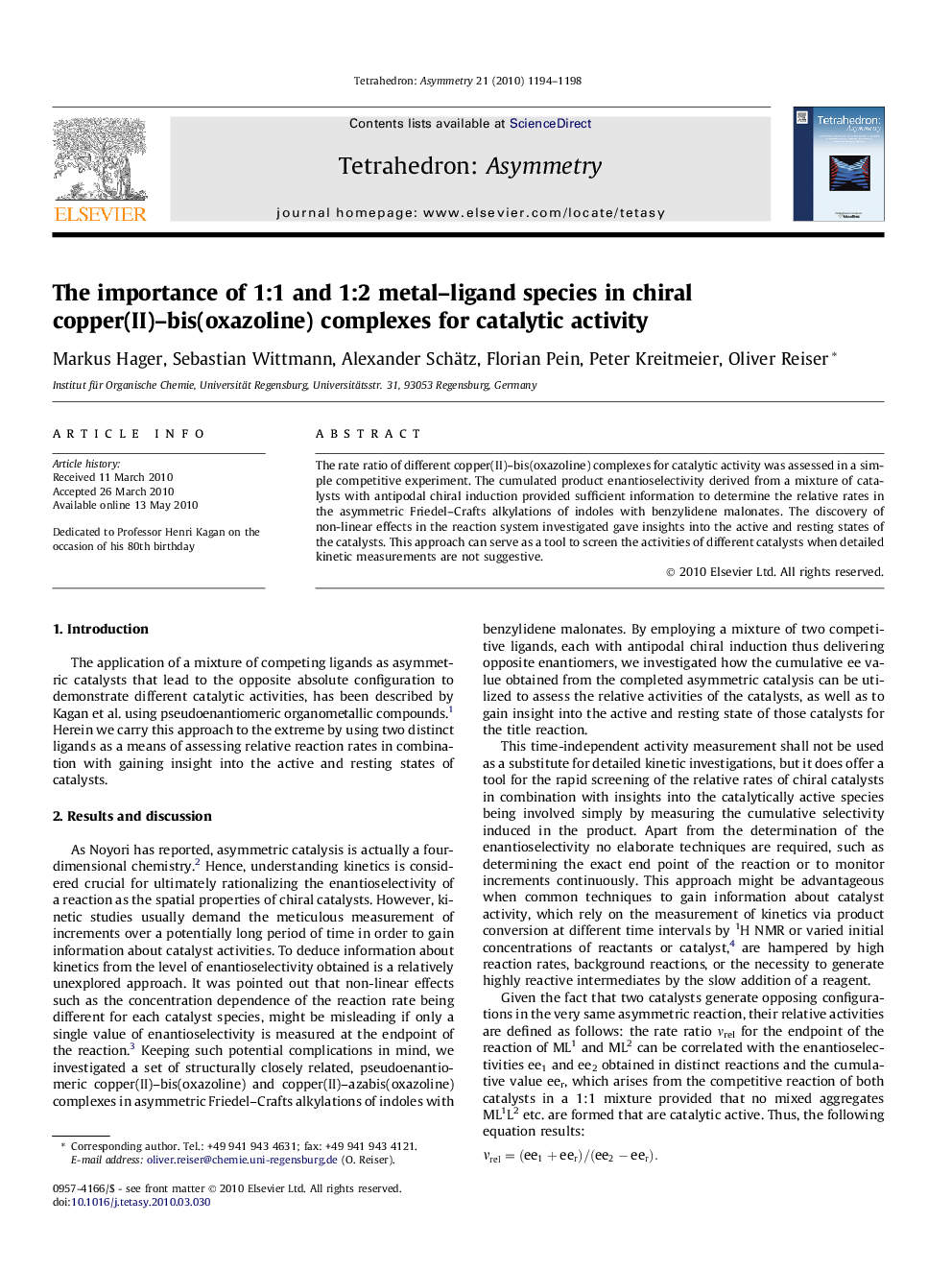| Article ID | Journal | Published Year | Pages | File Type |
|---|---|---|---|---|
| 1344722 | Tetrahedron: Asymmetry | 2010 | 5 Pages |
The rate ratio of different copper(II)–bis(oxazoline) complexes for catalytic activity was assessed in a simple competitive experiment. The cumulated product enantioselectivity derived from a mixture of catalysts with antipodal chiral induction provided sufficient information to determine the relative rates in the asymmetric Friedel–Crafts alkylations of indoles with benzylidene malonates. The discovery of non-linear effects in the reaction system investigated gave insights into the active and resting states of the catalysts. This approach can serve as a tool to screen the activities of different catalysts when detailed kinetic measurements are not suggestive.
Graphical abstractFigure optionsDownload full-size imageDownload as PowerPoint slide
(R)-diethyl 2-((1H-indol-3-yl)(phenyl)methyl)malonateC22H23NO4Ee = 90%[α]D25=-58.8 (c 1.0, CH2Cl2)Source of chirality: catalytic asymmetric Michael-additionAbsolute configuration: (R)
(R)-diethyl 2-((4-chlorophenyl)(1H-indol-3-yl)methyl)malonateC22H22ClNO4Ee = 80%[α]D25=-39.1 (c 1.0, CH2Cl2)Source of chirality: catalytic asymmetric Michael-additionAbsolute configuration: (R)
(R)-diethyl 2-((1H-indol-3-yl)(p-tolyl)methyl)malonateC23H25NO4Ee = 84%[α]D25=-37.3 (c 1.1, CH2Cl2)Source of chirality: catalytic asymmetric Michael-additionAbsolute configuration: (R)
(R)-diethyl 2-((1H-indol-3-yl)(4-methoxyphenyl)methyl)malonateC23H25NO5Ee = 83%[α]D25=-35.5 (c 1.0, CH2Cl2)Source of chirality: catalytic asymmetric Michael-additionAbsolute configuration: (R)
